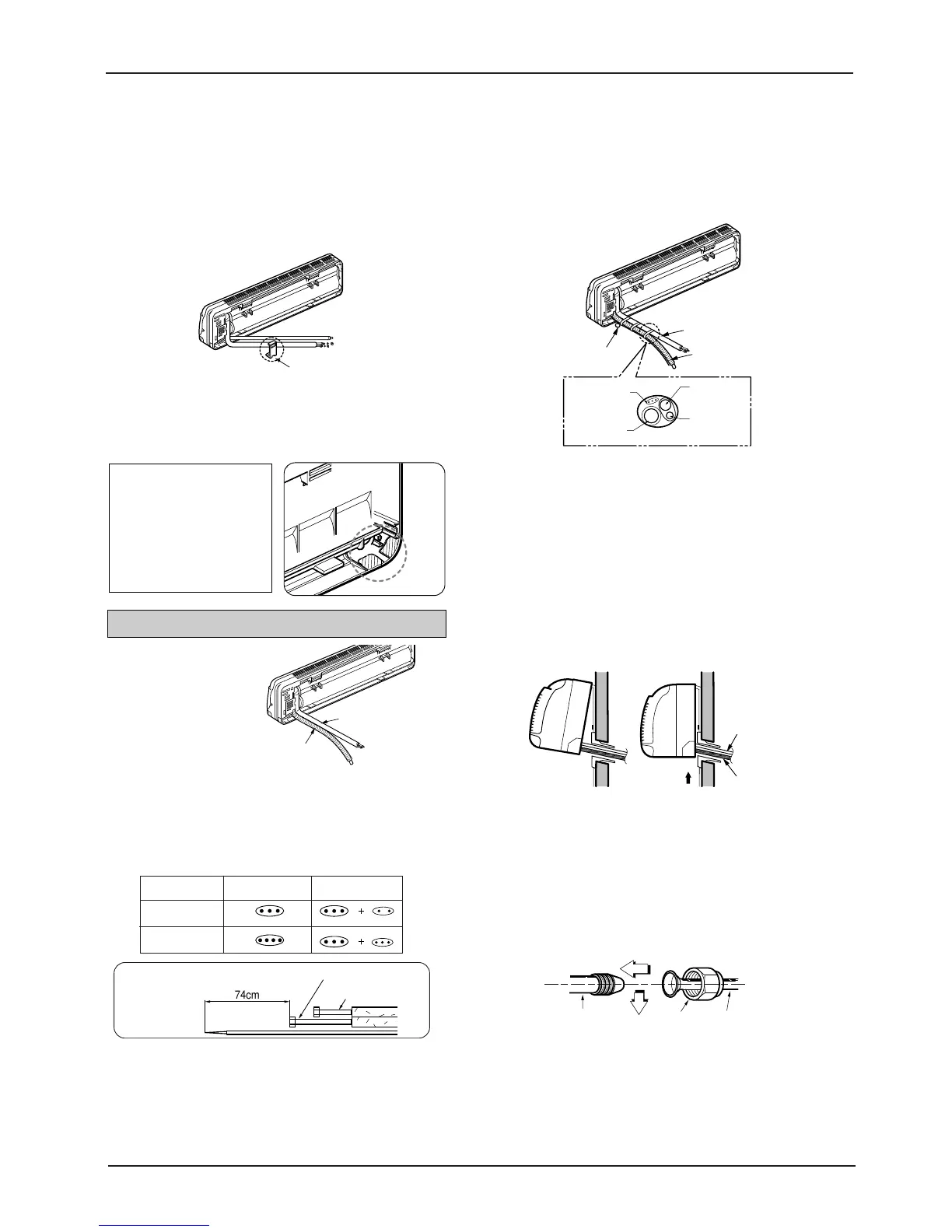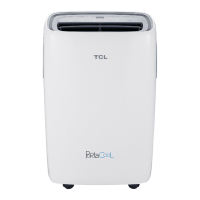3.5.2 Connection of piping--Indoor
1) Preparing the indoor unit's piping and drain hose for
installation through the wall.
2) Remove the plastic tubing retainer(see illustration
below) and pull the tubing and drain hose away from
chassis.
3) Replace the plastic tubing holder in the original posi-
tion.
A. Route the indoor
tubing and the
drain hose in the
direction of rear
right.
B. Insert the connecting cable into the indoor unit from
the outdoor unit through the piping hole.
1) Do not connect the cable to the indoor unit.
2) Make a small loop with the cable for easy connection
later.
3) Connecting cable
D. Indoor unit installation
• Hook the indoor unit onto the upper portion of the
installation plate.(Engage the two hooks of the rear
top of the indoor unit with the upper edge of the
installation plate.) Ensure that the hooks are properly
seated on the installation plate by moving it left and
right.
Press the lower left and right sides of the unit against the
installation plate until the hooks engage into their slots(click-
ing sound).
C. Tape the tubing, drain hose and the connecting
cable. Be sure that the drain hose is located at the
lowest side of the bundle. Locating at the upper
side can cause drain pan to overflow inside the
unit.
E. Connecting the pipings to the indoor unit and
drain hose to drain pipe.
• Align the center of the pipings and sufficiently tighten
the flare nut by hand.
NOTE:
If the drain hose is routed inside the room, insulate the
hose with an insulation material
* so that dripping from "sweat-
ing"(condensation) will not damage furniture or floors.
*Foamed polyethylene or equivalent is recommended.
Cooling Model
Capacity (Btu/h)
Heat Pump Model

